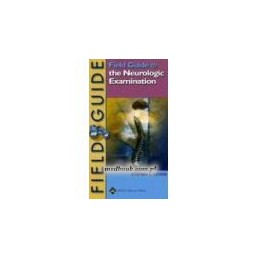- Reduced price

Order to parcel locker

easy pay


 Delivery policy
Delivery policy
Choose Paczkomat Inpost, Orlen Paczka, DHL, DPD or Poczta Polska. Click for more details
 Security policy
Security policy
Pay with a quick bank transfer, payment card or cash on delivery. Click for more details
 Return policy
Return policy
If you are a consumer, you can return the goods within 14 days. Click for more details
This new volume in the Field Guide Series provides a detailed review of the basic neurologic exam, giving you the tools needed to obtain valuable diagnostic information and address specific clinical presentations. The guides three sections include a brief overview of neurologic diagnosis, instructions on how to perform the basic components of the neurologic exam, and ways to tailor the exam to specific clinical situations.
Make the most of your next neurologic assessment!
Data sheet
SECTION I. NEUROLOGIC DIAGNOSIS: GENERAL CONSIDERATIONS
SECTION II. THE NEUROLOGIC EXAMINATION
THE NEUROLOGIC HISTORY
THE MENTAL STATUS EXAMINATION
THE CRANIAL NERVE EXAMINATION
THE MOTOR EXAMINATION
THE SENSORY EXAMINATION
THE CEREBELLAR EXAMINATION
THE REFLEX EXAMINATION
THE GAIT EXAMINATION
PUTTING IT ALL TOGETHER
SECTION III. THE NEUROLOGIC EXAMIINATION IN COMMON CLINICAL SITUATIONS
